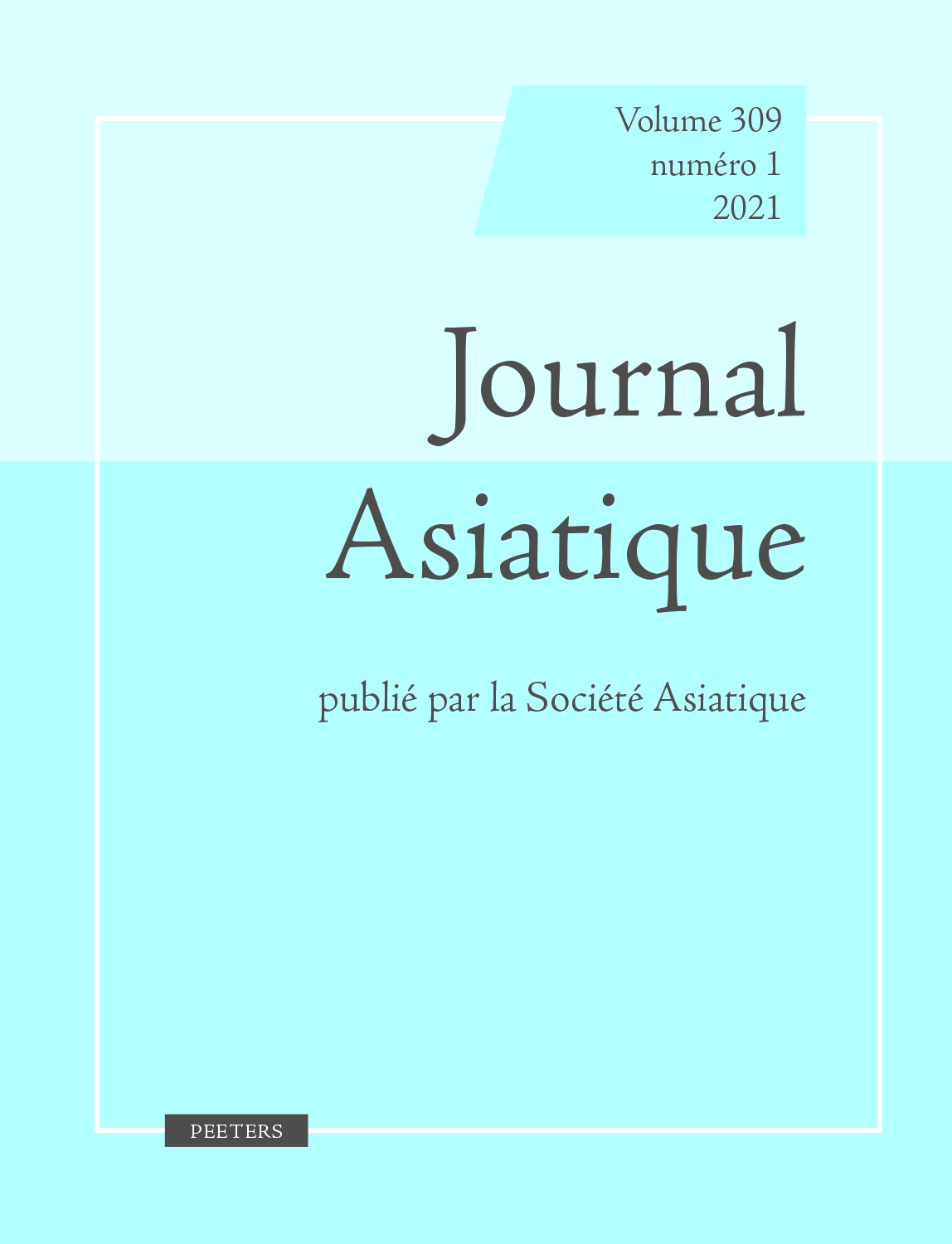 previous article in this issue previous article in this issue | next article in this issue  |

Preview first page |
Document Details : Title: The Earliest Attested Turkic Language Subtitle: The Chieh (*Kir) Language of the Fourth Century A.D. Author(s): SHIMUNEK, Andrew , BECKWITH, Christopher I. , NORTH WASHINGTON, Jonathan , KONTOVAS, Nicholas , NIYAZ, Kurban Journal: Journal Asiatique Volume: 303 Issue: 1 Date: 2015 Pages: 143-151 DOI: 10.2143/JA.303.1.3085124 Abstract : The recent revival by Étienne de la Vaissière of the idea that the Huns of European history are to be identified with the Hsiung-nu of Chinese history is based partly on Chinese and Sogdian accounts of the sacking of the cities Yeh and Loyang in the early fourth century AD. One of the key pieces of evidence not discussed by de la Vaissière is a prophecy recorded in Chinese transcription, which has been interpreted variously by previous scholars, who have proposed to identify the text linguistically with one or another language. Close reexamination based on a more accurate reconstruction of the Chinese and on careful attention to the Central Eurasian linguistic evidence allows the text to be accurately read and precisely identified as an archaic form of Turkic close to the earliest attested texts in Old Turkic. |
|


